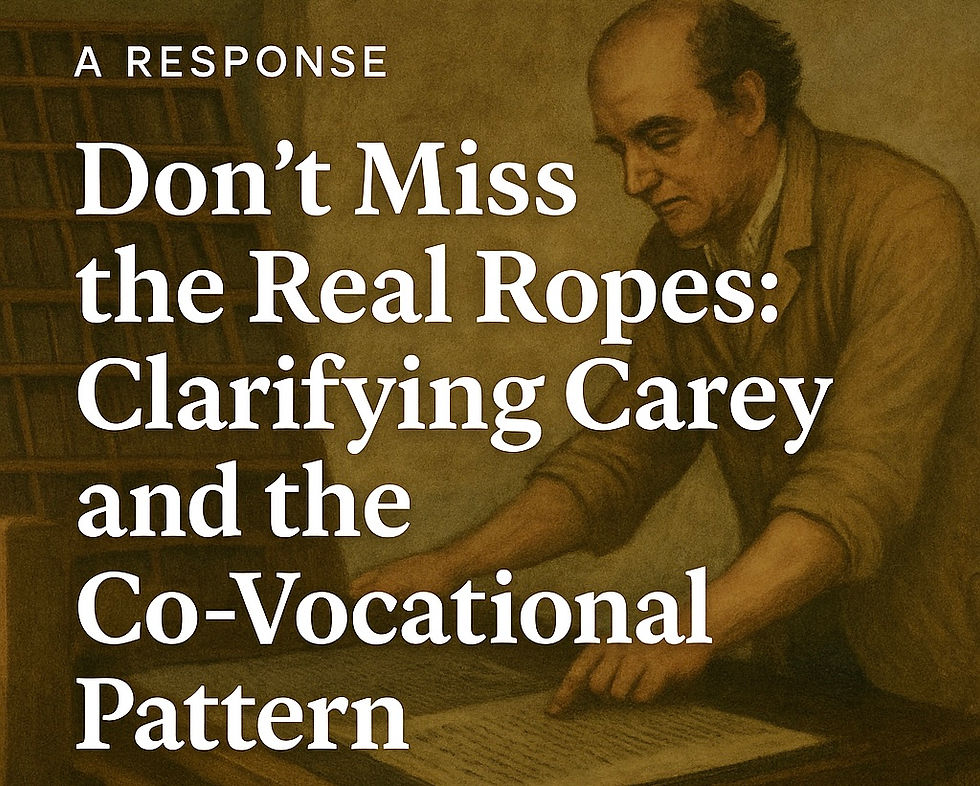Don’t Miss the Real Ropes: A Response Clarifying Carey and the Co-Vocational Pattern
- Guest Contributors

- Aug 4
- 2 min read
by Mark Goering

I’m grateful for the thoughtful post on William Carey and co-vocational mission. In response I hope to further sharpen the discussion: Carey only turned to printing and teaching because the Baptist Missionary Society’s funds weren’t reliable. His self-reliance wasn’t a chosen biblical model—it was survival.
That’s not wrong. Carey’s adaptation was, in many ways, forced. He wasn’t initially sent as a self-funded missionary or a strategic tentmaker. But the deeper point remains: what Carey discovered through hardship actually revealed something more enduring than the system he was sent with.
And here’s where we agree: the biblical model of Aquila and Priscilla is not merely about survival—it’s about intentional integration. They didn’t just make tents to get by; they wove their trade into their mission. Their livelihoods enabled mobility, credibility, and sustainability. That’s a key distinction.
But rather than dismiss Carey’s pivot as mere circumstantial improvisation, I would argue this: God used the breakdown of the rope-holding model to redirect Carey toward a deeper, more sustainable pattern—one we now recognize as covocational mission. His hardship exposed the fragility of dependence and forced a missiological innovation we’re still learning from.
In today’s world, it’s easier than ever to fund, fly, and fuel mission work with external resources, but ease doesn’t equal endurance. When apostolics are shaped to depend on systems rather than skills, they’re vulnerable to disruption—financial, political, or relational.
Globalization should not just accelerate dependency. It should accelerate capacity.
Like Aquila and Priscilla, today’s apostolics need to be equipped from day one to operate with both hands—one on their trade, the other on the gospel. We don’t train them to “fall back” on work; we train them to lead forward with it. Trade, business, education, agriculture, media—these aren’t distractions from mission. They are sentergistic.
So yes, Carey may have stumbled into it. Priscilla and Aquila may have modeled it more deliberately. But both lives confirm the same enduring truth: the Work must be sustainable, local, and resilient.
The future of global mission will not be built on quick wire transfers or air-dropped strategies. It will be built on men and women trained to plant churches and run businesses… preach Christ and build trust… proclaim the kingdom and participate in the economy.
Carey’s printing press and Aquila & Prascilla’s tentmaking weren’t distractions from the gospel—they were anchors for it. That’s the model that lasts. And that’s the mission we must pursue.
Thanks for sharpening the rope. Let’s keep weaving.




Comments